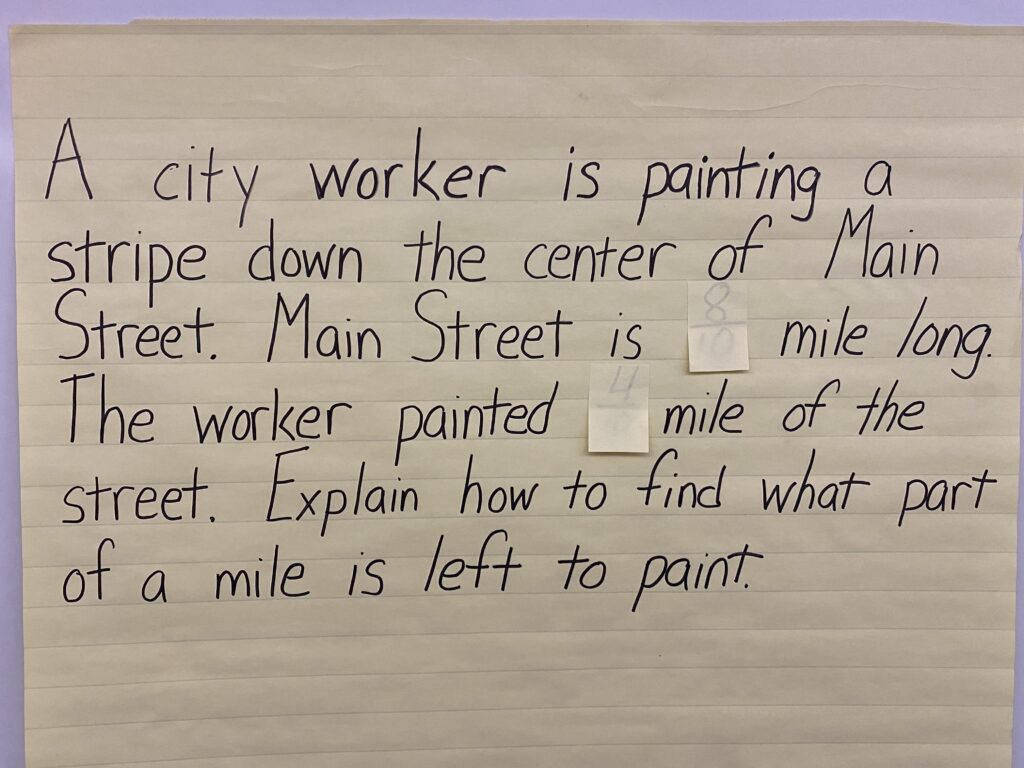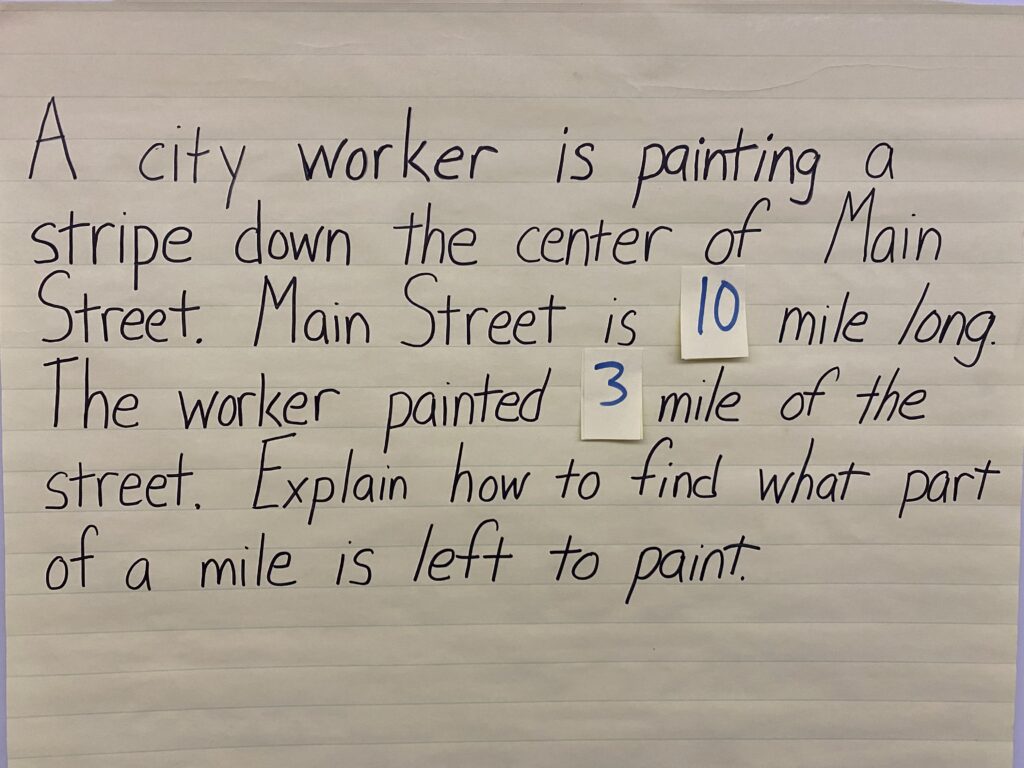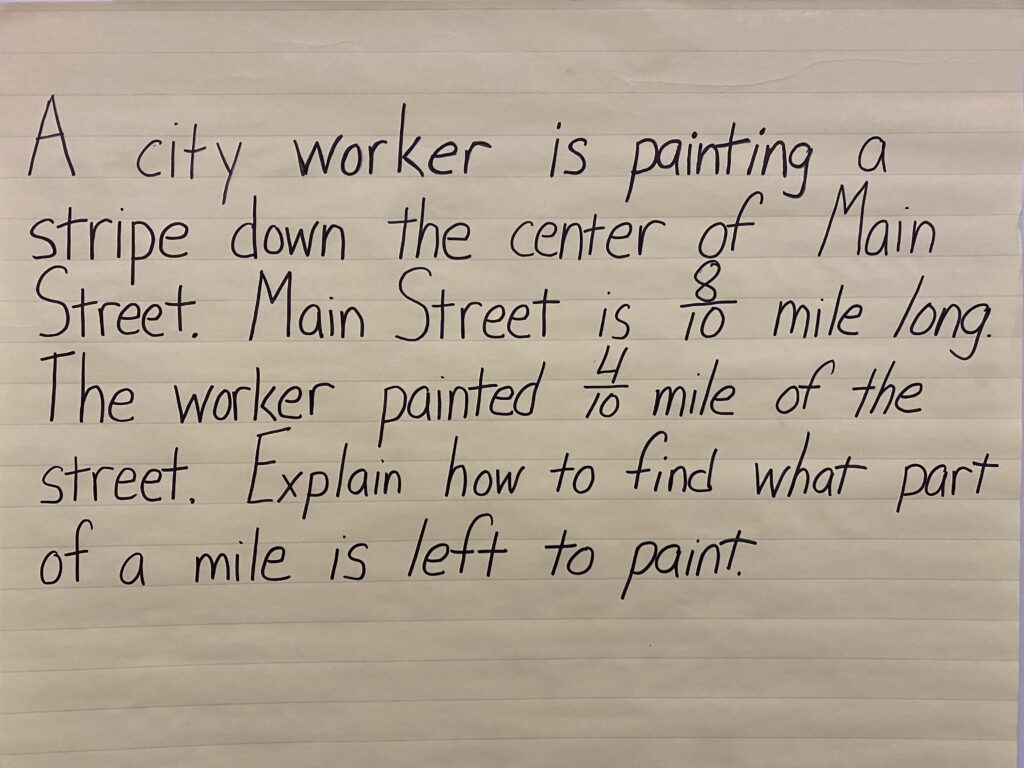A few years ago I was doing a lot of one-on-one work with a student who struggled in math. We often met before class to do some mental math and try to improve his number sense. After school, we would revisit the skill we discussed in class that day. He made a lot of progress and was starting to feel much more confident about math in general and problem solving in particular. Then we introduced fractions.
Shortly after we started our unit on fractions, he put his head down in frustration. I asked him what was wrong, and he replied, “I was just starting to get math and then… then fractions happened.” It was as if he had contracted a deadly virus named fractions. We talked about how good problem solving doesn’t change just because we moved from whole numbers to fractions. Over the next month or so, we continued to work and his confidence with fractions improved as well.
My approach with that student would be slightly different today. Instead of moving him right into word problems with fractions, I would use numberless word problems to help ease some of the anxiety. The numberless word problems would be a sort of scaffold to the problems with fractions. This would help him see that we’re still using the same problem solving strategies we used with whole numbers.
Numberless word problems are just that – word problems without numbers. Let’s look at the following problem.
Brian eats 1/8 of the pizza and Julie eats 4/8 of the same pizza. How much of the pizza did Brian and Julie both eat?
This is a pretty basic word problem involving fractions. Some students might struggle with this problem simply because they are intimidated by the fractions. So, why not take the fractions out all together?
Brian eats some pizza and Julie eats some pizza. How much of the pizza did Brian and Julie both eat?
Now we can have a conversation about what is happening in the problem. We can talk about how one person has some amount of pizza and another person has another amount. We want to know how much they have together. That hopefully leads students to see that this is an addition problem. Once they understand the context of the problem and have determined the operations they need to use (addition), then they can start looking at specific numbers.
Depending on the students and the problem, I might put some whole numbers in the problem before moving to fractions. This will give the student another opportunity to see the context of the problem before the fractions are introduced. I did this today with my class.



This is a wonderful strategy because it helps students focus on the context of the problem. The focus on the narrative portion of the problem before worrying about the numbers. They can’t worry about the numbers, because they aren’t there yet.
